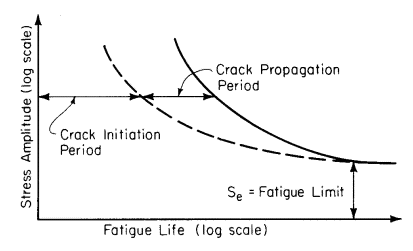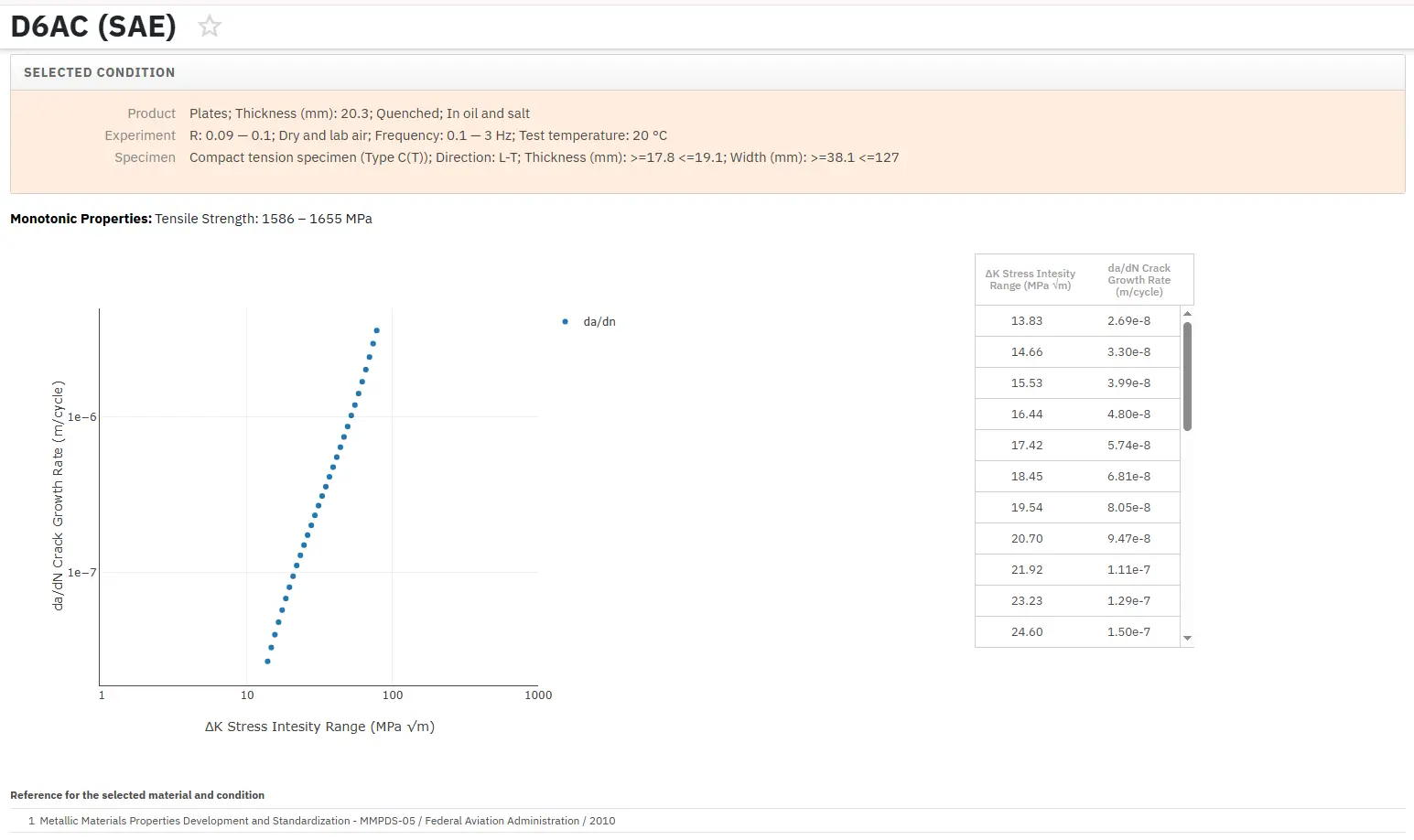Fracture Mechanics: Part One
Abstract
Fracture mechanics approaches require that an initial crack size be known or assumed. For components with imperfections or defects (such as welding porosities, inclusions and casting defects, etc.) an initial crack size may be known. Alternatively, for an estimate of the total fatigue life of a defect-free material, fracture mechanics approaches can be used to determine propagation. Strain-life approaches may then be used to determine initiation life, with the total life being the sum of these two estimates.
Unexpected failure of buildings, bridges, weapons, ships, trains, airplanes, and various machines has occurred throughout the industrial world. A number of these failures have been due to poor design. However, it has been discovered that many failures have been caused by preexisting flaws in materials that initiate crack that grow and lead to fracture. This discovery has, in a sense, lead to the field of study known as fracture mechanics.
The field of fracture mechanics is extremely broad. It includes applications in engineering, studies in applied mechanics (including elasticity and plasticity), and materials science (including fracture processes, fracture criteria, and crack propagation). A successful application of fracture mechanics requires some understanding of the whole field.
The fatigue life of a component is made up of initiation and propagation stages. This is illustrated schematically in Fig. 1

The size of the crack at the transition from initiation to propagation is usually unknown and often depends on the point of view of the analyst and the size of the component being analyzed. For example, for a researcher equipped with microscopic equipment it may be on the order of a crystal imperfection, dislocation,or a 0,1 mm-crack, while to the inspector in the field it may be the smallest crack that is readily detectable with nondestructive inspection equipment.
Nevertheless, the distinction between the initiation life and propagation life is important. At low strain amplitudes up to 90% of the life may be taken up with initiation, while at high amplitudes the majority of the fatigue life may be spent propagating a crack. Fracture mechanics approaches are used to estimate the propagation life.
Fracture mechanics approaches require that an initial crack size be known or assumed. For components with imperfections or defects such as welding porosities, inclusions and casting defects, etc. an initial crack size may be known.
Alternatively, for an estimate of the total fatigue life of a defect-free material, fracture mechanics approaches can be used to determine propagation. Strain-life approaches may then be used to determine initiation life, with the total life being the sum of these two estimates.
Access Fracture Mechanics Properties of Thousands of Materials Now!
Total Materia Horizon includes a unique collection of fracture mechanics properties such as K1C, KC, crack growth and Paris law parameters, for thousands of metal alloys and heat treatments.

Get a FREE test account at Total Materia Horizon and join a community of over 500,000 users from more than 120 countries.